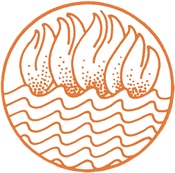ayurvedic
शरीरेन्द्रिय सत्वात्मा संयोगो। – चरक संहिता १।४२
Śarīrendriya satvātmā saṃyogo।1.42
The union of Shareera (body), Indriya (sense organs), Satva (mind) and Atma (soul).
Consultation and Guest Lectures are Available
Dear, Students and Faculty, Staff, if you’re interested to have more awareness on this Alternative Medicine, we will have a session with professional.

Ayurveda is an ancient health care tradition that has been practiced in India for at least 5,000 years. The word comes from the Sanskrit terms ayur (life) and veda (knowledge).
It’s based on the belief that health and wellness depend on a delicate balance between the mind, body, and spirit. Its main goal is to promote good health, not fight disease. But treatments may be geared toward specific health problems.
In the United States, it’s considered a form of complementary and alternative medicine (CAM).
Though Ayurveda, or Ayurvedic medicine, was documented in the sacred historical texts known as the Vedas many centuries ago, Ayurveda has evolved over the years and is now integrated with other traditional practices, including yoga.
Ayurveda is widely practiced on the Indian subcontinent — more than 90 percent of Indians use some form of Ayurvedic medicine, according to the University of Minnesota’s Center for Spirituality & Healing — and the tradition has gained popularity in the Western world, though it’s still considered an alternative medical treatment.
Principles of Ayurveda
Health care is a highly individualized practice under Ayurvedic principles, which state that everyone has a specific constitution, or prakruti, that determines his or her physical, physiologic and mental character and disease vulnerability, according to Dr. Bala Manyam, a neurologist and professor emeritus at Southern Illinois University School of Medicine Prakruti is determined by three "bodily energies" called doshas, Manyam told Live Science. There are three basic doshas, and though everyone has some features of each, most people have one or two that predominate, according to the University of Maryland Medical Center:

Pitta
Pitta energy is linked to fire, and is thought to control the digestive and endocrine systems. People with pitta energy are considered fiery in temperament, intelligent and fast-paced. When pitta energy is out of balance, ulcers, inflammation, digestive problems, anger, heartburn and arthritis can result.

Vata
Vata energy is associated with air and space, and is linked to bodily movement, including breathing and blood circulation. Vata energy is said to predominate in people who are lively, creative, original thinkers. When out-of-balance, vata types can endure joint pain, constipation, dry skin, anxiety and other ailments.

Kapha
Kapha energy, linked to earth and water, is believed to control growth and strength, and is associated with the chest, torso and back. Kapha types are considered strong and solid in constitution, and generally calm in nature. But obesity, diabetes, sinus problems, insecurity and gallbladder issues can result when kapha energy is out of balance, according to Ayurvedic practitioners.

